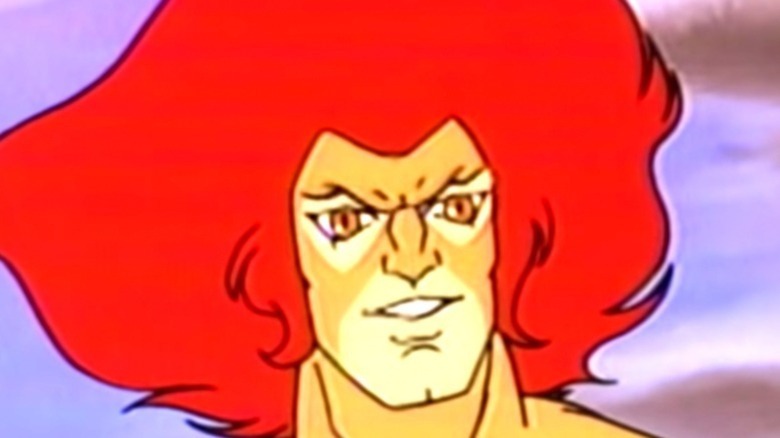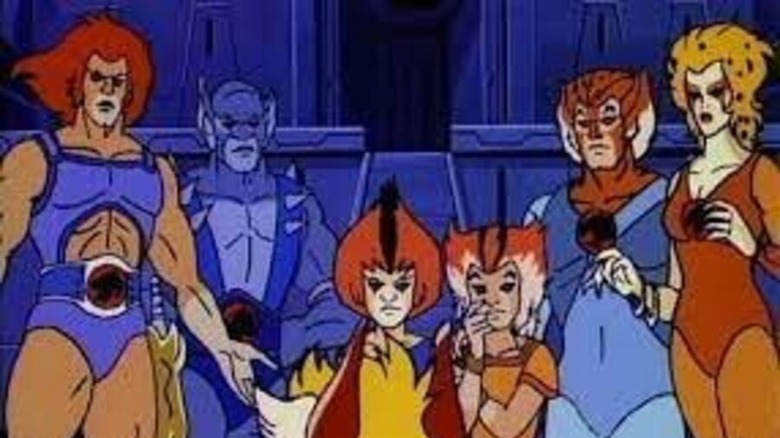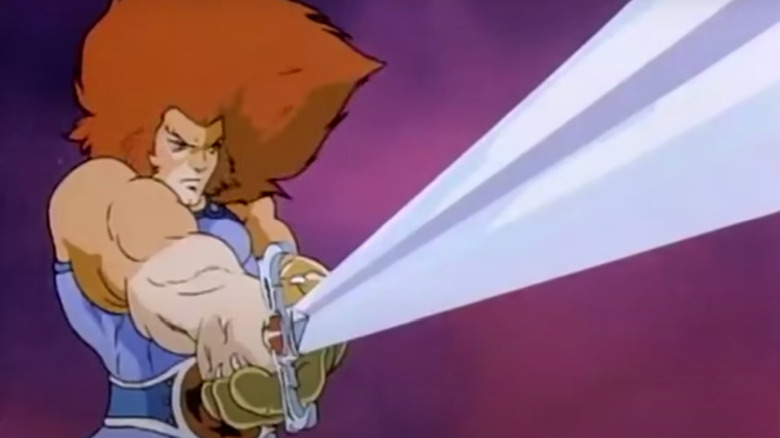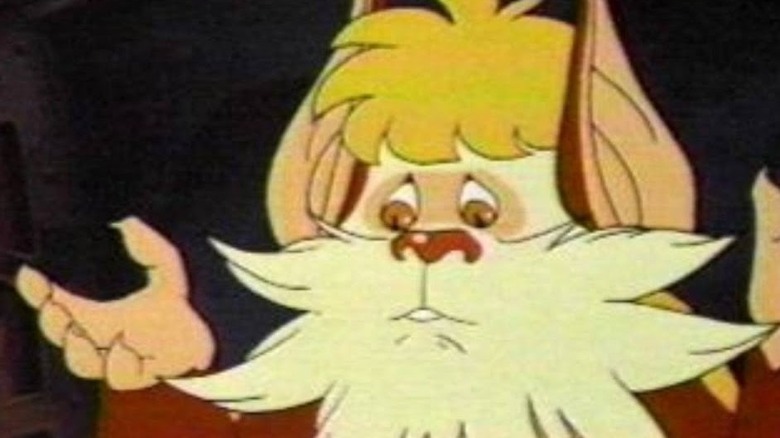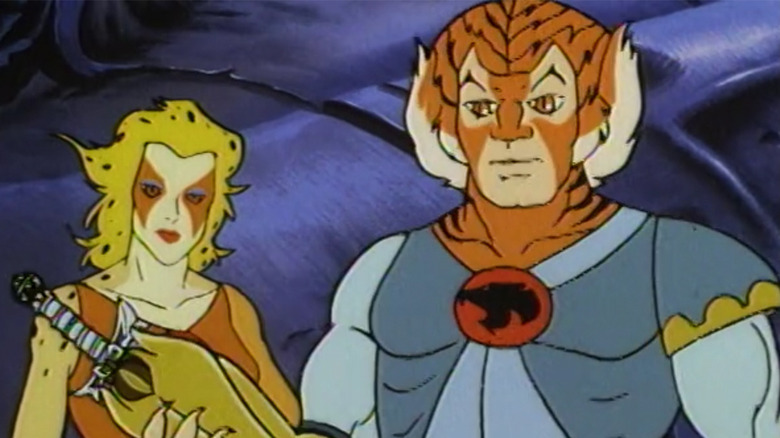The Real Reason ThunderCats Was Canceled
"Thunder. Thunder. ThunderCats – HO!"
Kids who grew up in the 1980s were spoiled for choice when it came to toons on the small screen. The tube was littered with endless zany, action-packed adventures, featuring an array of colorful characters who spawned their own toylines and sparked imaginations. And it goes without saying that the coolest characters of the bunch were humanoid animals who possessed some unique abilities. "ThunderCats" was at the center of this golden age of children's entertainment, and the show lives in the hearts of millions to this day.
Created by Tobin Wolf, Leonard Starr, and Rankin/Bass Productions, "ThunderCats" aired for four seasons between 1985 and 1989. The series chronicles the adventures of a group of humanoid alien cats who relocate to a planet known as Third Earth after being forced out of their home planet, Thundera. Cue a conflict with the undead sorcerer Mumm-Ra and his Mutant goons, and the action comes thick and fast.
"ThunderCats" is still fondly remembered by pop-culture enthusiasts, proving that its legacy is everlasting. However, back in the 1980s, it was one of many animated series that was canceled while there was still plenty of gas left in the tank. With that in mind, let's dig into the factors that led to "ThunderCats" getting sent to the TV graveyard.
ThunderCats was controversial from the get-go
While the show contains some questionable elements that we only notice as adults, controversial is the last word that comes to mind while watching an episode of "ThunderCats." In fact, the show's creators were so dedicated to promoting a positive message that they brought in the psychologist Dr. Robert Kuisis to analyze each script and make sure the stories contained strong moral themes. But that didn't stop "ThunderCats" from being unfairly judged by the naysayers.
The most popular kids' cartoons of the 1980s were routinely criticized by influential protest groups who argued that these shows were nothing more than violent toy ads. Naturally, "ThunderCats" caught the ire of some of these groups, resulting in a campaign to have it removed from syndication along with shows such as "He-Man" and "Teenage Mutant Ninja Turtles."
Per The New York Times, Action for Children's Television led the charge in the war for the children's souls. The group even took its protests to the Federal Communications Commission. However, its censorship campaign was dismissed after the government agency deemed the cartoons suitable for public consumption, provided that they didn't advertise their own merchandise during episodes. Similarly, as ThunderCats.org writes, the series worried bosses at the BBC in the UK, who refused to air it unless cuts — including the omission of nunchucks — were made to the episodes.
The botched attempt at a ThunderCats movie in the 1980s
During the golden age of children's cartoons, millions of young viewers tuned in to watch the shows and convinced their parents to buy all of the tie-in merchandise that accompanied them. So, you can understand why studios felt compelled to make spinoff movies based on some of the most popular series at the time. Unfortunately, films such as "Transformers: The Movie," "GoBots: Battle of the Rock Lords" and "My Little Pony" bombed at the box office, leading to the cancellation of "ThunderCats – Ho!" as a theatrical release (per Toy Galaxy).
"ThunderCats – Ho!" was instead released as a TV movie before being turned into five separate episodes that ushered in Season 2. The plot sees the titular cat-like heroes out to find three more Thundereans who escaped the destruction of the planet and ended up on Third Earth, all the while adding more context to the ThunderCats' history. That being said, turning movies into succinct 20-minute TV episodes requires cuts to be made, often resulting in some key story beats being removed.
In the end, the repurposed "ThunderCats – Ho" story confused viewers. It turns out that adding a bunch of random episodes to the beginning of the second season, without offering any real explanation, didn't improve the show's continuity. Of course, if the box office performances of the aforementioned movie spinoffs were anything to go by, it's possible that kids were simply turning their attention to other cartoons.
The network lost interest in ThunderCats
"ThunderCats" got off to a flying start, with animation studio Rankin/Bass Productions creating 65 episodes for Season 1 alone. As Tedium notes, greenlighting such a large number of episodes was commonplace in the 1980s. Basically, having such a large quantity of programming allowed television networks to broadcast popular series' five days per week for a span of 13 weeks. In regard to '80s animated shows, bulking up on episodes also gave their broadcasters plenty of material for syndicated reruns for years to come.
Following the success of the first season of "ThunderCats," 65 episodes were ordered by the Telepictures Corporation for a follow-up. But the days of fresh episodes of "ThunderCats" airing every single day for weeks on end were gone. Instead, the network opted to release the new batch across three 20-plus-episode seasons, which aired between 1987 and 1989. "ThunderCats" was no longer viewed as a worthwhile long-term investment. At the same time, any show that survives for 100-plus episodes must be chalked up as a success story in the grand scheme of things.
The ThunderCats toyline eventually lost its steam
Was "ThunderCats" set up for the sole purpose of selling toys? Absolutely not. However, despite the series' strong moral fabric and commitment to entertaining storytelling, the merchandise was always going to influence the series. According to "ThunderCats" writer Kimberly Morris (via Mental Floss), the creators were often instructed to write new characters into their stories at the behest of toy manufacturers LJN. However, the creative team supposedly relished the opportunity to give the toy concepts some interesting backstories and were more than happy to oblige. When the sales started drying up in the late 1980s, though, the show's cancellation was inevitable.
By the time "ThunderCats'" fourth and final season rolled around, LJN had stopped producing action figures to tie in with the series. Per Fandom, the toy company regularly released new figures and cards until Season 3. Therefore, the decision to discontinue the line before the fourth installment had aired suggests that the writing was on the wall for "ThunderCats" heading into the remaining episodes.
The story didn't end on a sad note, at least. Time has been kind to "ThunderCats" and its action figures. According to Transformerland, LGN's figures, vehicles, and cards have become desired collectibles that command a hefty price tag to this day.
The future of ThunderCats looks promising
It's rare for any popular 1980s IP to ever truly fade away. If the recent-ish live-action adaptations of "Transformers" and "Teenage Mutant Ninja Turtles" tell us anything, it's that Hollywood keeps them on ice until the iron is hot again. "ThunderCats" is no different, as evidenced by director Adam Wingard's upcoming movie, which is reportedly set to be a hybrid of CGI and animation.
Fear not though, "ThunderCats" purists. Wingard plans to draw upon the original series for inspiration. Furthermore, fans can rest assured knowing that the project is in the trustworthy hands of a genuine fan. "I was writing my ThunderCats screenplay through my entire 10th-grade year," he told Deadline. "And I was hand-writing it. The screenplay itself ended up being 272 pages long."
Of course, Wingard's planned "ThunderCats" feature won't be the only attempt to resurrect the humanoid feline heroes for a 21st-century audience. At the time of this writing, the franchise has been rebooted twice courtesy of 2011's "ThunderCats" and 2020's "ThunderCats Roar." Both of those series were also canceled (per Comic Book Resources), so here's hoping that the film will enjoy a better fate than its television predecessors.
